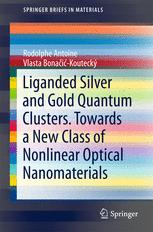

Most ebook files are in PDF format, so you can easily read them using various software such as Foxit Reader or directly on the Google Chrome browser.
Some ebook files are released by publishers in other formats such as .awz, .mobi, .epub, .fb2, etc. You may need to install specific software to read these formats on mobile/PC, such as Calibre.
Please read the tutorial at this link: https://ebookbell.com/faq
We offer FREE conversion to the popular formats you request; however, this may take some time. Therefore, right after payment, please email us, and we will try to provide the service as quickly as possible.
For some exceptional file formats or broken links (if any), please refrain from opening any disputes. Instead, email us first, and we will try to assist within a maximum of 6 hours.
EbookBell Team

5.0
98 reviewsMetallic quantum clusters belonging to intermediate size regime between two and few hundred of atoms, represent unique building blocks of new materials. Nonlinear optical (NLO) characteristics of liganded silver and gold quantum clusters reveal remarkable features which can be tuned by size, structure and composition. The two-photon absorption cross sections of liganded noble metal quantum clusters are several orders of magnitude larger than that of commercially-available dyes. Therefore, the fundamental photophysical understanding of those two-photon processes in liganded clusters with few metal atoms deserve special attention, in particularly in context of finding the mechanisms responsible for these properties. A broad range of state-of-the-art experimental methods to determine nonlinear optical properties (i.e. two-photon absorption, two-photon excited fluorescence and second harmonic generation) of quantum clusters are presented. The experimental setup and underlying physical concepts are described.
Furthermore, the theoretical models and corresponding approaches are used allowing to explain the experimental observations and simultaneously offering the possibility to deduce the key factors necessary to design new classes of nanoclusters with large NLO properties. Additionally, selected studied cases of liganded silver and gold quantum clusters with focus on their NLO properties will be presented as promising candidates for applications in imaging techniques such as fluorescence microscopy or Second-Harmonic Generation microscopy.